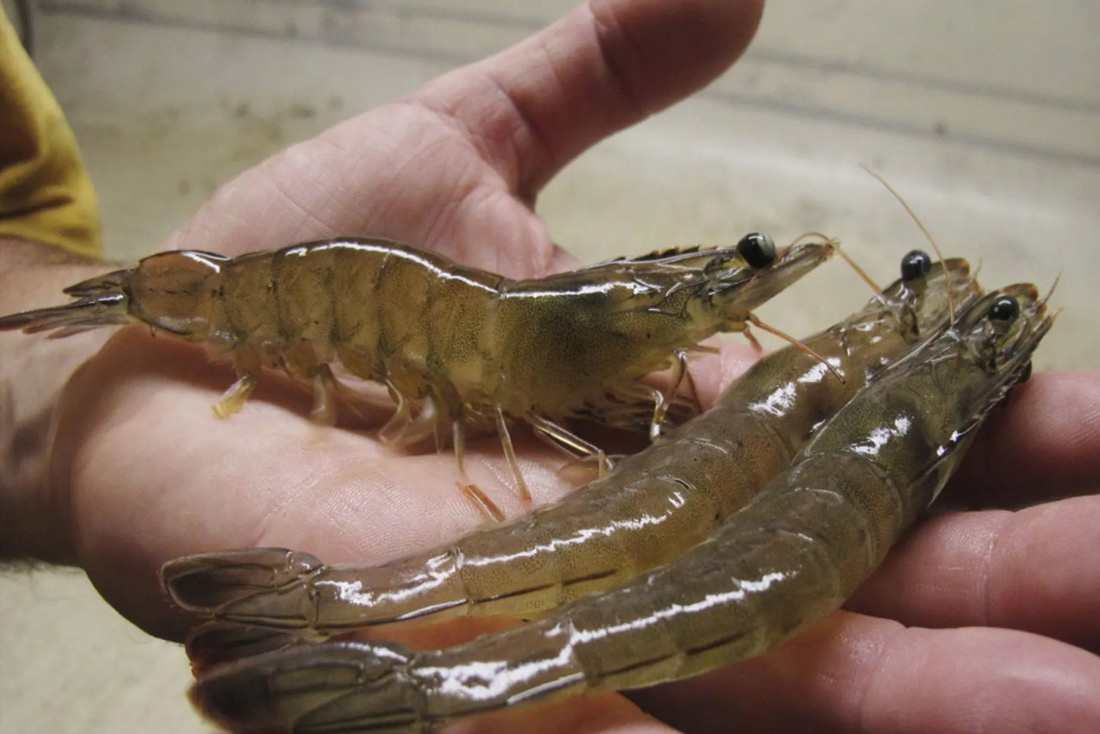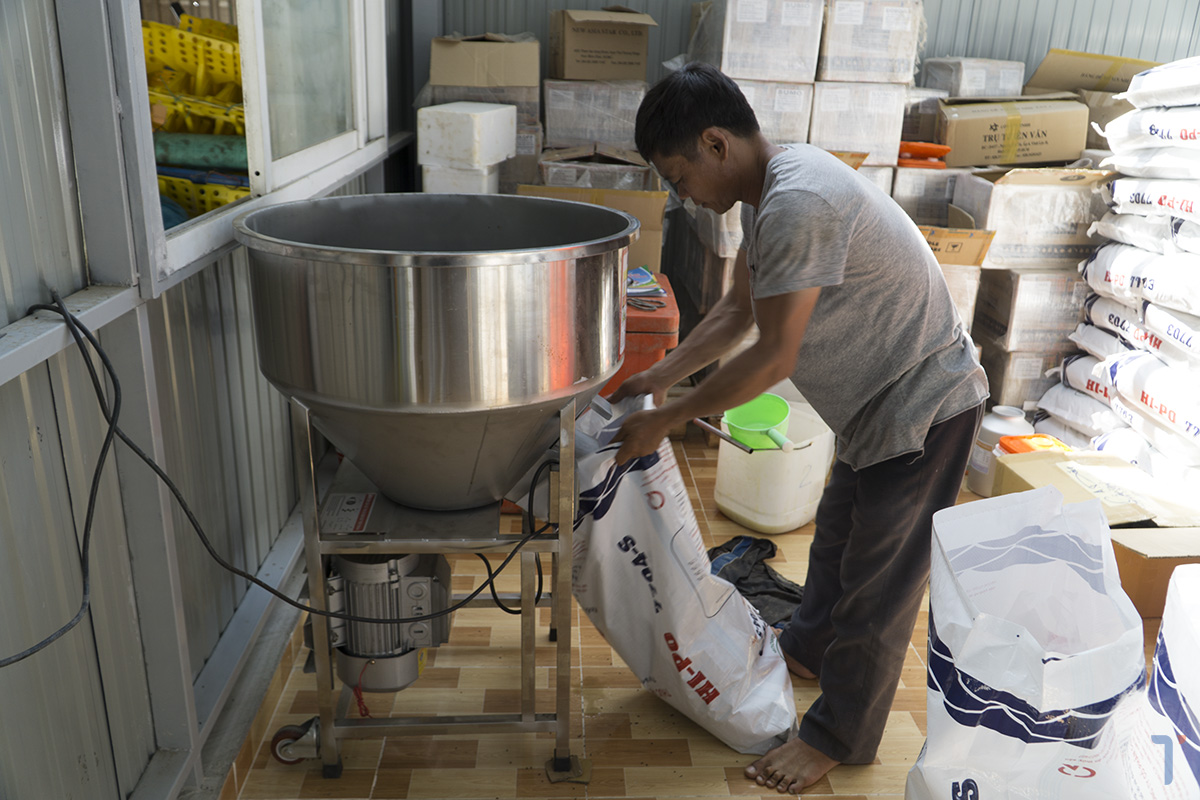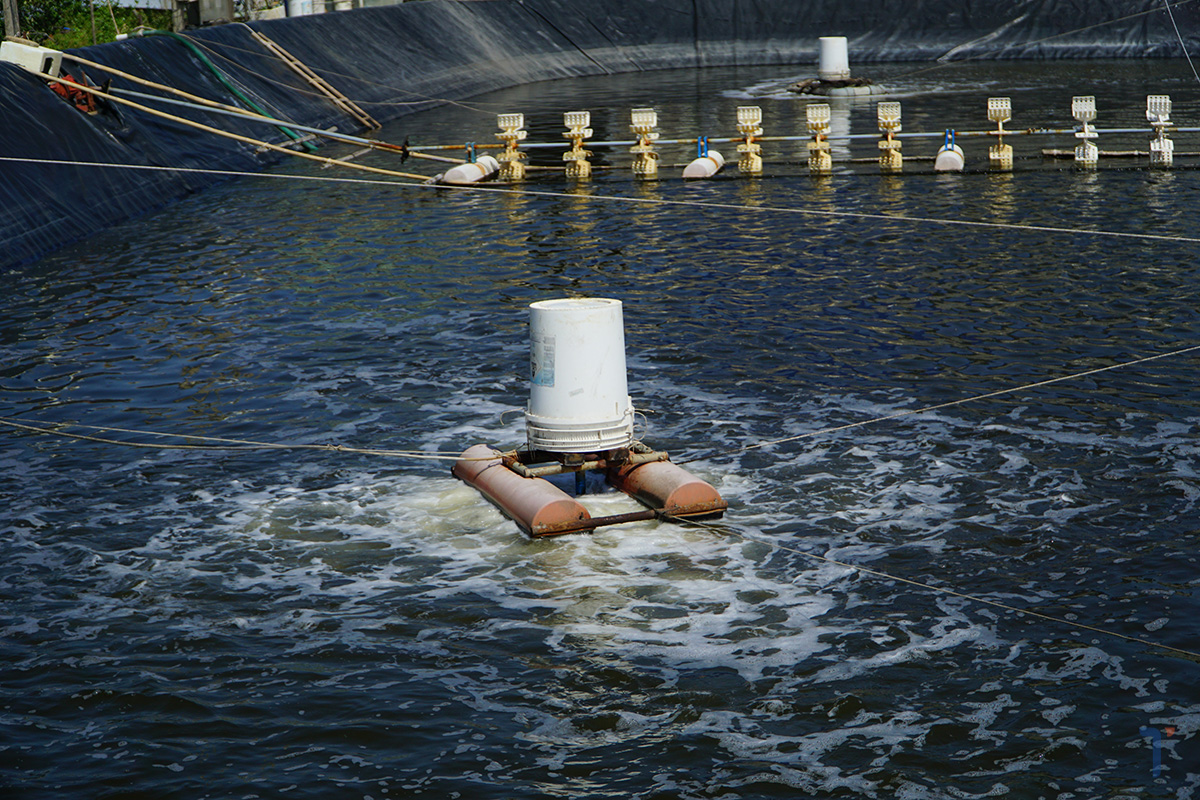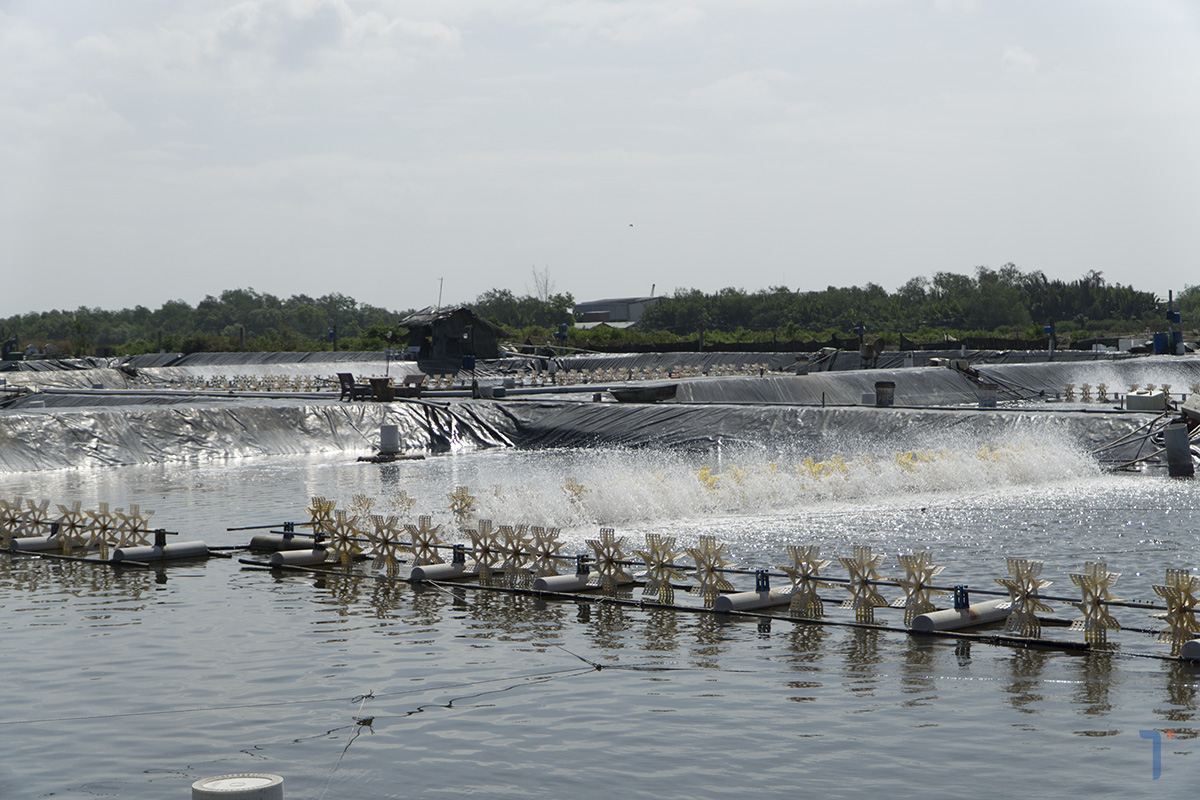
Surely people always remember the recommendation in aquaculture in general and aquaculture in particular: “First breed, Second lip, Three bait, Four skills”.
Seeds, environment, feed and farming techniques play an equally important role in the integration, determining the success or failure of the whiteleg shrimp farming model. In this article, we refer to the environmental factors of white leg shrimp farming, in which, focus on toxic gas NO2.
NO2 is the result of the breakdown of NH3 by bacteria. Most shrimp farmers today are looking for ways to minimize the bad effects of toxic NO2 on survival, molting, growth, disease, etc., by means of controlling feed, algae growth, and stabilization. pH, using microorganisms, enhancing oxygen…
However, recognizing NO2 as soon as it starts to adversely affect shrimp, as well as providing a solution, minimizing the bad effects of NO2 toxic gas quickly, least expensively, and above all effectively. best. To do so, shrimp farmers need to know the source and process of NO2 toxic gas formation in the pond, to actively handle and minimize the bad effects of this toxic gas.
Why and how is NO2 toxic gas formed?
– The process of dredging and improving the initial pond before the farming season has not been done thoroughly, the amount of old sludge in the pond is still high.
– The water source has a lot of silt, not through the sedimentation system, zic-zac, when entering the pond, it slowly accumulates, causing the formation of toxic NO2.
– Using the water of the previous crop for the new crop is also the cause of the rapid increase in NO2 toxic gas in the first month of the new crop or in the high NO2 available water source.
– Management of shrimp feeding is not appropriate, causing excess of food, accumulation and decomposition of organic matter, toxic gas NO2.

– Most of the feed ingredients are of plant origin and cereals. Phosphorus in food is present in the form of phytic acid, often associated with positively charged minerals, forming phytate complexes that are difficult to digest. Only about 30% of the feed is fully digested by shrimp, the rest is discharged into the culture environment directly or indirectly through shrimp feces. NO2 is formed through excess feed very quickly, which is dangerous for shrimp.
– Algae in ponds grow out of control, causing flowers and water to decline when it reaches the old phase, due to heavy rain, algae cannot photosynthesize or because farmers use chemicals to kill bacteria periodically…also the cause of NO2 toxic gas. formed, increased.
– Dead shrimp shells, shrimp excrement… accumulating on the pond bottom also causes toxic gas NO2 to arise and increase.
– Fluctuation in pH is an important cause, related to NO2 toxic gas. In which, when the pH increases to 8,5 8.5, the concentration of NH3 accumulated in the pond will increase, leading to an increase in the amount of NO2. This follows the natural nitrogen cycle in the pond.
How much NO2 toxic gas will affect farmed shrimp?
First, we have to answer the question: What are the first signs that shrimp are contaminated with toxic gas? The first manifestations of harmful effects of NO2 on shrimp were recognized in ponds such as shrimp appearing, swimming on the water surface, along the shore, floating early in the morning and late in the afternoon. At that time, NO2 combined with Hemocyanin in the shrimp blood, forming Methemoglobin, which lost the ability to transport oxygen in the blood, thereby causing the shrimp to be deprived of oxygen. The pond bottom turns black, smells bad, the pond has many dark air bubbles, hard-to-break bubbles, colloidal, viscous, fishy water.

Shrimp appear a lot in clean areas, where the water blower and oxygen pump work. The oxygen content in the pond decreased to ≤ 4 mg/liter, tended to continue to decrease when the concentration of NO2 toxic gas gradually increased. The pH in the pond is high, at this time, organic decomposition mainly produces toxic gas NH3, the raw material for creating toxic NO2 gas is abundant. Shrimp reduce eating slowly to stop eating. Shrimps are difficult to molt, molts stick to their shells, their shells are long and hard, shrimp growth is slow, dead shrimp appear in their hooves, the bottom of the siphon pit.
In fact, the recommended limit of NO2 in ponds is ≤ 1 ppm, we admit, there are exceptions, when the concentration of NO2 exceeds the upper limit, shrimp still development, however, it should be affirmed, these cases are very few. In the culture of white leg shrimp with low salinity, the difference in osmotic pressure between the shrimp body and the environment disturbs the balance, when the competition between the two ions NO2- and Cl-, shrimps find it difficult to molt. molting, soft shell, slow growth. This is the time for external parasites, bacteria to attack, destroy gills, shrimp lose the ability to exchange oxygen, causing black spot disease, muscle perforation, causing mass death of shrimp.
What to do at such times?
Farmers need to slug, dredge, improve, and remove as much bottom mud from the pond before the new crop. The water source before being used for shrimp farming needs to be settled, filtered, and carefully treated to ensure the right chemicals for the respective stages, the right dosage, and the required time. The chemicals potassium permanganate KMnO4, PAC[Al2(OH)nCl6-n]m or Al2O3 depositor, kill bacteria with chlorin Ca (OCl)2. Limit the use of old water for the new crop, in case of mandatory use, it should be thoroughly treated with the above chemicals.
During the farming process, when NO2 is high, it is necessary to change 40-50 % of the water as a quick measure to quickly reduce the concentration of toxic NO2 gas, and immediately improve the oxygen content in the pond. Apply Zeolite with a combination of Yucca and granular oxygen, the amount of each according to the product manufacturer’s instructions.

Increase oxygen in the pond through water fan, oxygen aeration. People should choose probiotics with organic components such as Bacillus, Thiobacillus, Clostridium, Lactobacillus, Nitrosomonas, Nitrobacteria, combined with organic enzymes, which catalyze the decomposition of microorganisms such as: Protease, Phytase, Lipase, Amyllase, Cellulate, Chitinase… support oxygen for beneficial bacteria to exist, multiply biomass, participate in converting NH3, NO2 into NO3, N2…
Reducing and stabilizing pH with Al2(SO4)3.14H2O aluminum alum, dose of 5 kg aluminum alum/1000m3 of water, keeping pH stable at 7.5 – 8.2, active impact on organic decomposition, producing ammonium NH4, limiting the production of NH3, cutting off the source of NO2 generation in the pond.
No algae control, through feed control, prevent algae from taking in excess food as a source of nutrients. Siphon, vacuum the gar pit 2-3 times a day, remove shrimp shells, dead shrimp carcasses, shrimp feces…
Meeting 80-90% of shrimp’s feed needs is better than satisfying 100% of demand. Strictly control feeding through the hooves. Supplementing with microorganisms such as Bacillus, Lactic acid bacillus, Fructo-Oligosaccharides, 1-3,1-6 Beta Glucans, Oligo Saccharides… incorporating Phytase enzyme into the feed. Mineral supplements, especially organic minerals.
Ly Vinh Phuoc – Source: tepbac.com

 Tiếng Việt
Tiếng Việt Indonesia
Indonesia